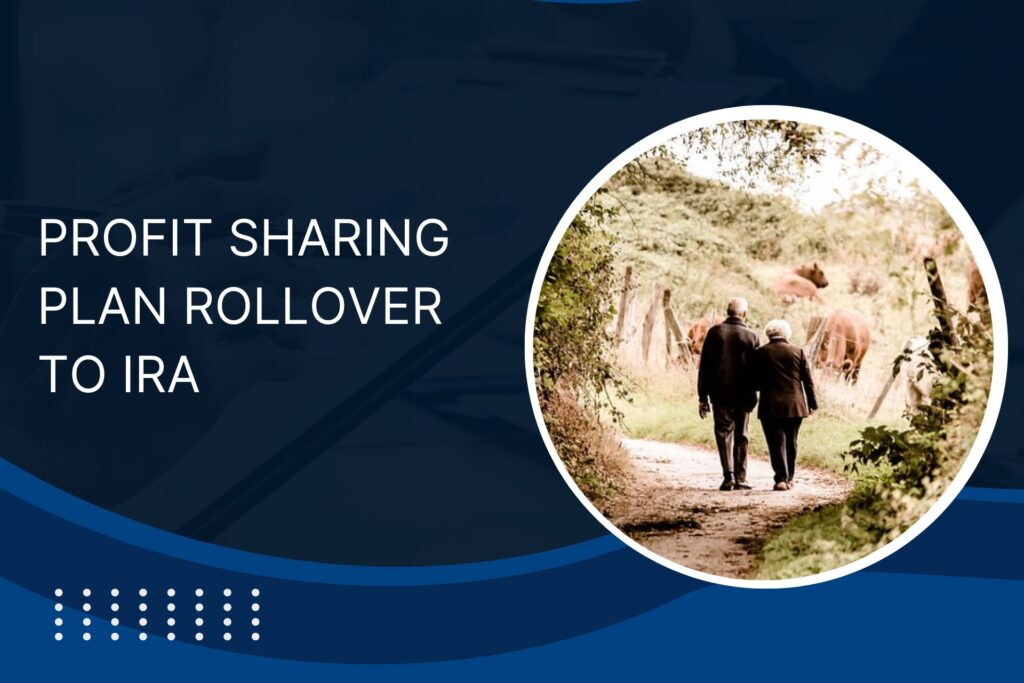When it comes to securing your financial future, understanding the intricacies of retirement plans is essential. One of the most advantageous moves you can make is rolling over a profit sharing plan into an Individual Retirement Account (IRA). This process can provide you with greater control over your investments, potential tax benefits, and more flexible withdrawal options. In this comprehensive guide, we will delve into everything you need to know about executing a profit sharing plan rollover to IRA.
Understanding Profit Sharing Plans
A profit sharing plan is a type of retirement plan offered by employers, allowing employees to receive a share of the company’s profits. These contributions are typically made by the employer and can vary each year depending on the company’s profitability. The primary advantage of profit sharing plans is that they incentivize employees to contribute to the company’s success while also preparing for retirement.
What is a Rollover?
A rollover involves transferring the funds from one retirement account to another without incurring immediate tax liabilities or penalties. This process is particularly beneficial when moving from an employer-sponsored plan, such as a profit sharing plan to IRA. By doing so, you maintain the tax-deferred status of your retirement savings and often gain access to a broader range of investment options.
Benefits of Profit Sharing Plan rollover to IRA
1. Greater Investment Choices
When you roll over your profit sharing plan to IRA, you typically gain access to a wider array of investment options. Unlike employer-sponsored plans, which might limit your choices to a few mutual funds or company stock, IRAs offer the flexibility to invest in stocks, bonds, mutual funds, ETFs, and other assets.
2. Improved Control and Flexibility
IRAs allow you to take control of your retirement funds. You can choose your own financial institution, manage your investments, and make adjustments based on your financial goals and market conditions. This level of control can be crucial for optimizing your retirement strategy.
3. Potential Tax Advantages
By Profit Sharing Plan rollover to IRA, you can defer taxes on your retirement savings. Additionally, depending on your income level and contributions, you might be eligible for a Roth IRA conversion, which offers tax-free withdrawals in retirement.
4. Consolidation of Retirement Accounts
Many individuals have multiple retirement accounts from different employers. Rolling these into a single IRA can simplify your financial management. Consolidation allows for easier tracking of your investments and can reduce administrative fees.
Steps to Roll Over a Profit Sharing Plan to an IRA
1. Evaluate Your Current Plan
Before initiating a rollover, review the terms and conditions of your current profit sharing plan. Check for any restrictions or requirements, such as vesting schedules or potential fees for early withdrawal.
2. Choose the Right IRA
Decide between a Traditional IRA or a Roth IRA. A Traditional IRA allows for tax-deferred growth, whereas a Roth IRA requires after-tax contributions but offers tax-free withdrawals. Consider your current and future tax situation when making this decision.
3. Open an IRA Account
If you don’t already have an IRA, you’ll need to open one. Choose a reputable financial institution or brokerage that offers the investment options and services that best suit your needs.
4. Initiate the Rollover
Contact the administrator of your profit sharing plan to initiate the rollover process. This can be done through a direct rollover or an indirect rollover. In a direct rollover, the funds are transferred directly from your profit-sharing plan to your IRA, which is usually the preferred method to avoid potential tax withholding and penalties.
5. Complete the Transfer
Ensure that the funds are transferred within 60 days if you opt for an indirect rollover to avoid taxes and penalties. Confirm the transfer with both your old plan administrator and your new IRA provider to ensure a smooth transition.
Want to Know More about 401K Plans?
Click here to Schedule a Free Consultation Today!Key Considerations and Potential Pitfalls
1. Avoiding Taxes and Penalties
To avoid taxes and penalties during a rollover, opt for a direct transfer whenever possible. If you choose an indirect rollover, be mindful of the 60-day rule and ensure the full amount, including any withheld taxes, is deposited into the new IRA.
2. Understanding Required Minimum Distributions (RMDs)
Traditional IRAs are subject to Required Minimum Distributions (RMDs) starting at age 72. Failure to take RMDs can result in hefty penalties. Ensure you plan for these distributions as part of your retirement strategy.
3. Considering Fees and Expenses
IRAs may have different fee structures compared to your profit sharing plan. Evaluate account maintenance fees, trading fees, and fund expense ratios to ensure you are making a cost-effective decision.
Maximizing Your Retirement Strategy
Profit Sharing plan rollover to IRA can be a strategic move to enhance your retirement savings. However, it’s crucial to approach this process with a thorough understanding of your options and the potential impacts on your financial future. Consulting with a financial advisor can provide personalized guidance tailored to your specific circumstances.
Conclusion
A profit sharing plan rollover to IRA is a powerful tool for optimizing your retirement savings. By understanding the benefits, evaluating your current plan, and carefully executing the rollover process, you can take full control of your retirement funds, enjoy greater investment flexibility, and potentially achieve significant tax advantages.


